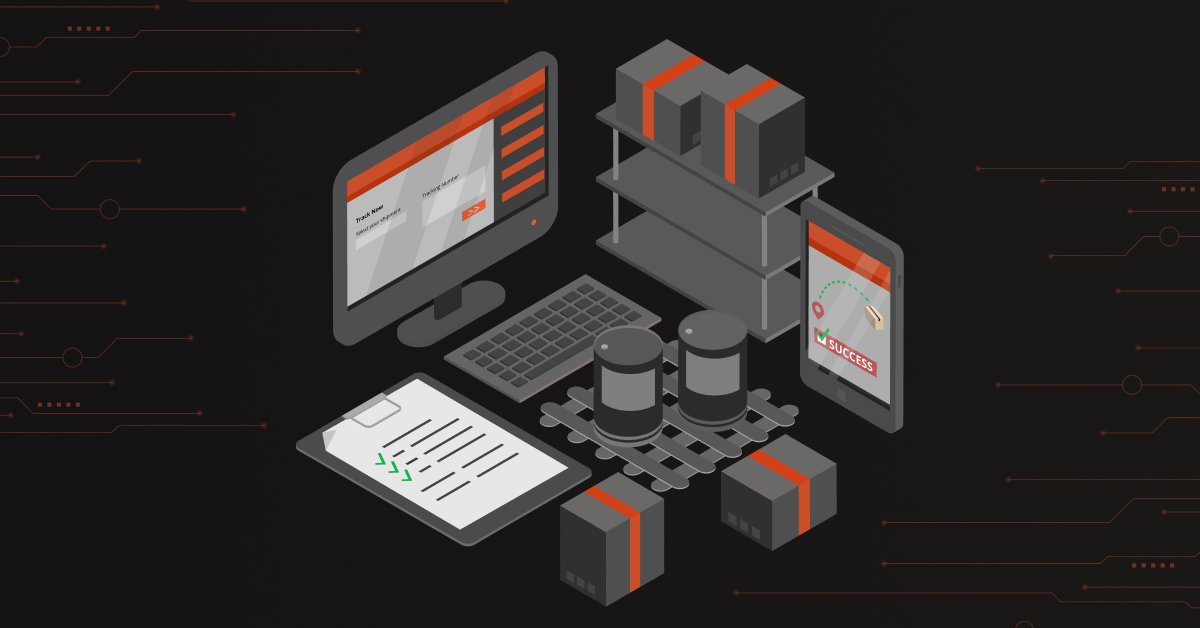EDI (Electronic Data Interchange) Integration is the strategic merging of electronic data interchange capabilities with a company’s existing operational systems. It’s a method that allows different businesses to electronically exchange critical documents, such as purchase orders, invoices, and shipping notices, in a standardized and automated manner.
When you connect EDI with Sage 100, a popular ERP used for managing business operations, it’s called Sage 100 EDI Integration. This process makes Sage 100 and EDI systems work together seamlessly. They can automatically trade data, like sales orders or invoices, in a more efficient way.
Contents
Types of EDI Integration
The types of EDI integrations are divided into three broad categories:
1. Direct EDI Integration:
In direct EDI integration, businesses connect their systems directly to their trading partners’ systems using electronic connections. This direct link allows for quick and efficient communication without intermediaries.
Common method in direct integration is:
Point-to-Point Connection: This is when two organizations link their EDI systems directly for straightforward communication. It works well for businesses with a small number of trading partners.
2. Indirect EDI Integration:
Indirect EDI integration involves using a third-party service or platform to facilitate EDI communication between EDI Customers. This method is flexible and accommodating to partners with varying technical capabilities.
Examples of indirect integration methods include:
iPaaS (Integration Platform as a Service): iPaaS, or Integration Platform as a Service, is a method of indirect EDI integration that involves using a third-party cloud-based platform to facilitate seamless communication and data exchange between different trading partners. This approach simplifies the integration process, allowing businesses to connect with various partners efficiently.
Value-Added Network (VAN): VAN acts as an intermediary, ensuring secure and private communication between trading partners. It offers additional features like data encryption, translation, and protocol conversion. VANs are beneficial for businesses with varying trading partner requirements.
3. Hybrid EDI Integration:
Hybrid EDI integration combines elements of both direct and indirect integration methods. It provides flexibility for businesses to adapt their approach to the diverse needs of their partners.
For example, a business might use direct integration with its most critical partners for instant communication, while relying on an integration service provider for numerous other partners.
Also read: Hybrid Integration Platform vs iPaaS (HIP vs iPaaS): Which Is The Right Fit For You?
How is Sage 100 EDI Integrated
Integrating Sage systems with EDI involves several steps to ensure seamless electronic data interchange between Sage 100 and your trading partners.
Here’s a simplified overview of the integration process:
1. Assessment and Planning
Identify the specific EDI requirements of your business and trading partners, including the types of documents you need to exchange (e.g., purchase orders, advance shipping notices, and invoices).
Evaluate your existing Sage 100 setup to determine its compatibility with EDI integration.
2. Select an EDI Solution
Choose an EDI provider or software solution that aligns with your business needs and supports the required EDI document standards (e.g. DCKAP Integrator).
3. Integration Setup
Configure your Sage 100 system to work with the chosen EDI solution. This typically involves customizing settings, data fields, and mappings to ensure smooth communication.
4. Data Mapping
Map the data fields within your Sage 100 system to the corresponding fields in EDI documents. This ensures that information is correctly translated and formatted for exchange.
5. Testing
Conduct thorough testing to ensure that data is correctly transmitted between Sage 100 and the EDI system. This testing involves different scenarios and error handling to verify the integration’s reliability.
6. Document Exchange Automation
Configure the integration to automate the exchange of documents at specific intervals or in response to predefined triggers, reducing manual data entry and errors.
7. Compliance and Security
Ensure that your Sage 100 EDI integration complies with industry-specific and legal standards. Implement security measures to safeguard the confidentiality and integrity of data during transmission.
8. Training and Support
Train your staff on how to use the integrated system effectively and provide ongoing support for any technical problems or questions.
9. Monitoring and Maintenance
Regularly monitor the integration to ensure data integrity and address any emerging issues. Maintenance includes updates and adjustments to accommodate changing business needs or new trading partners.
By following these steps, you can successfully integrate Sage products with EDI, allowing for streamlined and automated electronic data exchange with your trading partners. This integration can enhance efficiency, reduce errors, and improve collaboration in your business operations.
Benefits of Sage 100 EDI Integration
Here are the few major benefits of Sage 100 EDI Integration:
- Increased Productivity: Sage 100 EDI Integration automates tasks, reducing the need for manual data entry. This frees up your staff to focus on more valuable work, making your business more efficient.
- Enhanced Communication: EDI enables quicker and more reliable communication with your partners. Users can easily exchange important documents like purchase orders and invoices, ensuring everyone is on the same page.
- Greater Visibility: With Sage 100 EDI Integration, you gain better insight into your business operations. You can track the status of orders and transactions, helping you make informed decisions.
- Zero Errors: Automation reduces the risk of human errors. This means fewer mistakes in your business processes, leading to smoother operations and customer satisfaction.
- Developed Relationships: Streamlined communication and efficient processes can help you build stronger relationships with your partners and customers. It fosters trust and collaboration.
- Reduce Cycles: Tasks that used to take a long time can now be completed faster. This means shorter processing cycles, allowing you to respond to customer needs more quickly.
- Improved Customer Service: Faster order processing and accurate information lead to better customer service. Your customers will appreciate the efficiency and reliability of your operations.
Top 5 Software for Sage 100 EDI Integration
1. DCKAP Integrator
DCKAP Integrator is an advanced tool that streamlines your business operations by enhancing data exchange between your ERP and EDI systems. Its flexibility and powerful features make integration a success.
With strong data mapping capabilities, it ensures accurate translation between your systems, reducing errors and ensuring seamless data flow.
It is highly adaptable and can be seamlessly integrated into your existing systems. This flexibility means you don’t have to engage with multiple vendors or make extensive custom integration investments to fulfill your data synchronization needs.
2. Jitterbit
Jitterbit doesn’t just dump EDI transactions into a single system. Instead, it seamlessly integrates EDI data into even the most complex workflows within your enterprise. This means your data is not isolated but can be instantly managed and synchronized with multiple business applications throughout your organization.
Jitterbit’s integration solution is highly adaptable and can work with any system, including leading accounting and ERP systems. This includes Sage 100 ERP, which means it can easily connect with your existing software to streamline EDI processes.
3. Cleo
Cleo is a recognized and trusted solution provider in the EDI industry, serving thousands of enterprises. Its reputation and track record demonstrate its ability to deliver reliable and effective EDI integration solutions.
Cleo provides a seamless and efficient way to exchange essential order documents with your supply chain partners. This ensures smooth communication and transaction processing between your business and your partners. It offers a high degree of flexibility, allowing you to tailor the integration to your specific needs.
4. IBM
IBM’s software and solutions are designed to accommodate all major EDI standards. This means you can seamlessly work with various trading partners and systems without compatibility issues.
IBM provides the option to extend EDI integration capabilities with APIs (Application Programming Interfaces).This means you can easily adapt to emerging partner mandates, handle real-time transaction processing needs, and more, ensuring that your EDI integration remains up-to-date and responsive to changing requirements. IBM supports a variety of deployment options, allowing you to align your EDI integration strategy with your IT infrastructure needs.
5. Boomi
Boomi’s EDI solution streamlines your business processes, ensuring that you can collaborate effectively with partners. This simplifies data exchange, creates better supply chain visibility, and results in better end results.
Boomi ensures that collaboration is an integral part of your broader digital transformation strategy. You don’t need a separate external integration or workflow tool to successfully manage data exchange with your ERP system. This integrated solution makes EDI integration seamless and efficient.
Also read: Top 6 Dell Boomi Alternatives & Competitors for iPaaS [2023]
The Right Choice for Distributors – DCKAP Integrator
DCKAP Integrator is a cloud-based solution specifically designed with distributors in mind. It is tailored to understand the intricacies of the distribution business, along with its distinct needs and challenges. This understanding makes it a preferred choice for distributors seeking effective Sage 100 EDI Integration.
Here is why it is a good choice:
- Streamlined Complex Integration: DCKAP Integrator excels at planning and executing complex integration procedures with its automated workflow orchestration. This simplifies various integration processes like Sage integration Hubspot Sage integration Sage Shopify integration, allowing organizations to efficiently manage intricate data exchange tasks.
- Enhanced Productivity: Workflow automation provided by DCKAP Integrator significantly boosts productivity. By automating challenging integration processes, businesses can reduce the need for extensive manual management, freeing up valuable time and resources for other critical tasks.
- Real-Time Integration Monitoring: This solution offers real-time integration monitoring capabilities. Businesses can closely track transactions, identify bottlenecks, and proactively address any issues that may arise during the integration process.
- Robust Exception Handling: DCKAP Integrator features robust exception handling. In the event of discrepancies or failed transactions, the system generates informative messages to help troubleshoot and resolve the issues. This ensures that accurate data flows continuously through the systems, with minimal interruptions.
- Scalability: DCKAP Integrator is adaptable and scalable, making it ideal for business growth. Customization options enable organizations to tailor the integration process to their unique requirements. As a result, it can seamlessly expand to accommodate new highly responsive trading partner compliance or adhere to different EDI standards, effectively meeting evolving business situations.
DCKAP Integrator is the leading choice for distributors seeking ERP EDI Integration and Sage ERP integration. It excels in simplifying complex integration tasks, elevating productivity through automation, providing real-time monitoring, offering robust exception handling, and scaling with ease.
This comprehensive and adaptable solution is perfectly suited to meet the distinct needs of expanding businesses. To discover more, we invite you to sign up for a demo today and witness how DCKAP Integrator can enhance your business operations.
FAQS
What is EDI software, and how does it work?
EDI software is a tool that facilitates the electronic exchange of business documents between trading partners. It translates data from your business system into a standardized format for transmission to your partners. An EDI workflow outlines the step-by-step process of how EDI documents are exchanged and integrated into your business operations. It’s crucial for ensuring a smooth and efficient EDI process.
What is Sage 100 EDI Integration?
Sage 100 EDI Integration is the process of connecting Sage 100 (an enterprise resource planning system) with an Electronic Data Interchange (EDI) system to enable seamless electronic document exchange with trading partners, such as suppliers and customers. Sage 100 EDI Integration can handle a wide range of documents, including purchase orders, outbound invoices, shipment details, and more, depending on your business needs.
What are some popular EDI solutions available in the market today?
Some popular EDI integration tools or EDI solutions include companies like SPS Commerce, TrueCommerce, Cleo Integration Cloud, DCKAP Integrator, IBM Sterling B2B Integrator, B2BGateway, and Mapadoc. These solutions offer a range of features and capabilities to meet the diverse needs of businesses.
What are the cost considerations for Sage 100 EDI Integration?
The cost of integration includes software licensing, implementation, ongoing support, and potential customization. It’s important to get a detailed cost breakdown from your chosen integration provider.
How can I determine my trading partners’ EDI requirements?
Contact your trading partners directly or consult their EDI guidelines to understand their specific document formats, transmission methods, and data requirements.
Why is it important for distributors to implement ERP and EDI Integration?
As the technology evolves, ERP and EDI integration is essential for distributors to enhance operational efficiency, reduce costs, improve accuracy, and get a competitive advantage for a long term in the dynamic marketplace.
What are cross reference values, and how are they configured within an EDI solution?
Cross reference values are specific data values used to match fields between internal systems and EDI documents. They are configured within an EDI solution to enable accurate data translation. Available cross references are mappings within an EDI system that link data fields between the internal system (e.g., ERP) and EDI documents. They ensure that data is correctly translated and exchanged.
Who are the end users of EDI systems within a business?
End users can be employees responsible for processing EDI orders, managing inventory, and handling shipping and billing. They are the individuals directly involved in executing the EDI process. Additionally, EDI customers are trading partners using EDI for transactions, while clients may refer to businesses or individuals receiving services or products. Clients can also be EDI customers in a business context.
Is EDI integration an easy process for businesses to adopt?
The ease of EDI integration depends on factors like your existing systems and the complexity of your EDI requirements. However, many businesses find it manageable with the right tools and support. Moreover, EDI leads to lower transaction fees by automating processes, minimizing errors, and enhancing operational efficiency, resulting in good results.
Is Cloud EDI Integration secure, and how is data protected in the cloud?
Cloud EDI providers typically employ advanced security measures, including encryption and access controls, to safeguard data during transmission and storage. It’s important to choose a reputable cloud provider with robust security practices.
What does it mean for a system to be an “EDI Integration Powerhouse”?
An EDI Integration Powerhouse is a system or solution known for its exceptional capabilities in integrating and automating electronic data interchange processes. It efficiently manages complex integration requirements and large volumes of transactions.
Expand PL, MAS, UPC Code, UDFS, SPS, ASN
These terms cover various aspects of business, data management, product identification, healthcare, and supply chain management, providing a better understanding of their significance within their respective contexts.
- PL (Purchase Ledger)
- MAS (Manufacturing Application Standard )
- UPC Code (Universal Product Code)
- UDFS (User-Defined Field Structure)
- SPS (SPS Commerce, EDI Integration Solution)
- ASN (Advanced Shipping Notice)
What is the role of customer service people in maintaining customer satisfaction with EDI processes?
Customer service person plays a vital role in ensuring customers’ concerns are addressed promptly and accurately, contributing to an overall decent experience.
Where are the key integration points within an EDI solution, and how do they interact with business systems like ERP?
Integration points within an EDI solution include document generation, data translation, validation, and communication. These are the only integration points interact with business systems such as ERP to ensure seamless data exchange.




